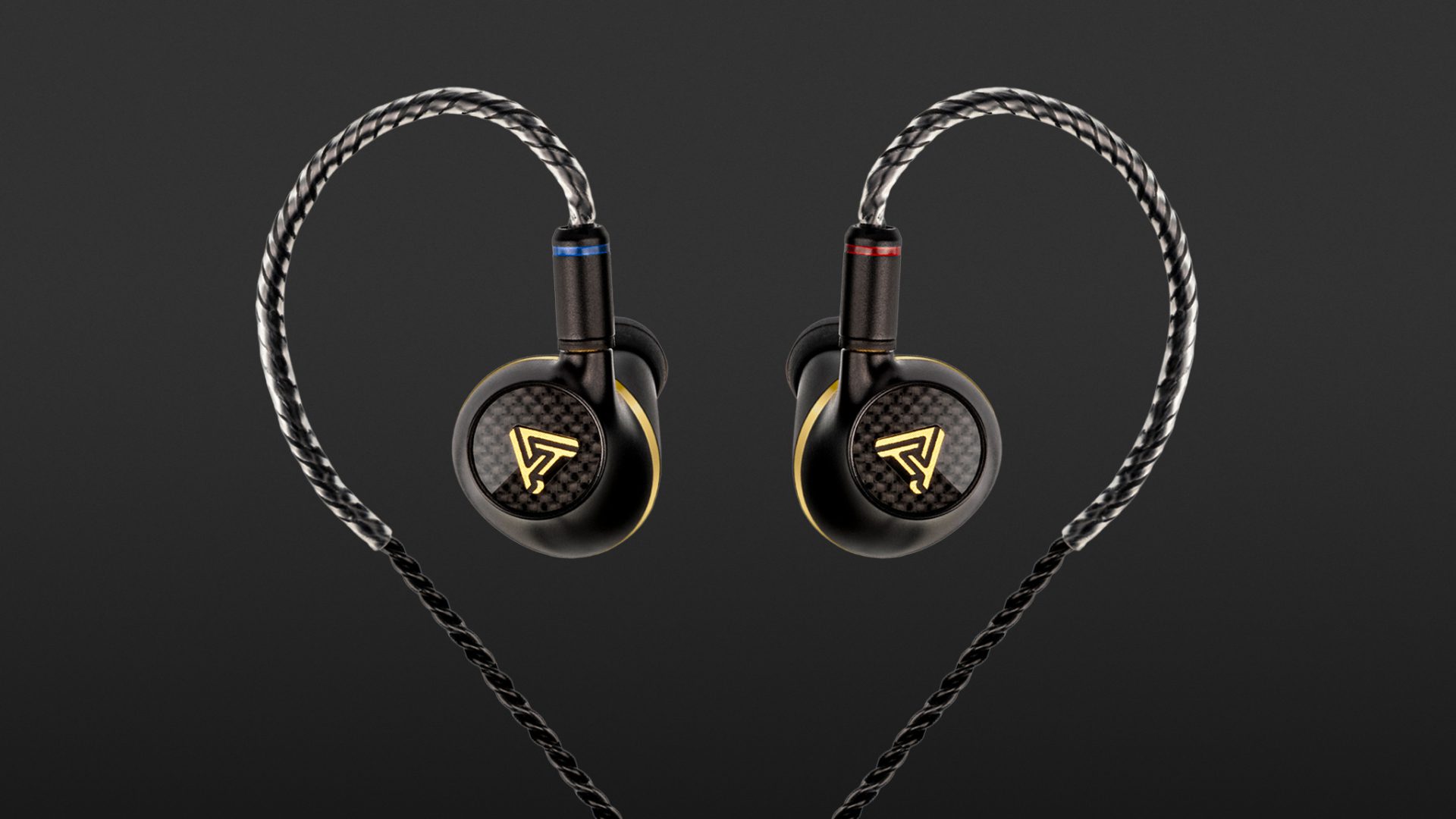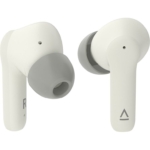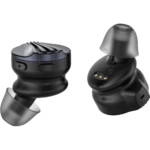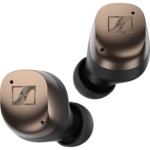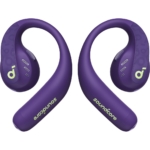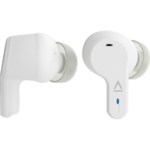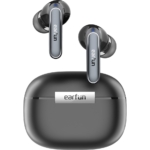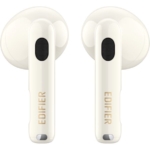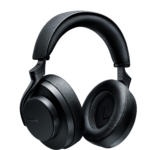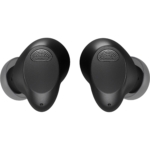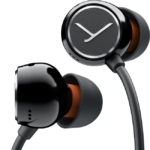The Audeze Euclid showcase Audeze’s well-proven planar magnetic driver technology in an in-ear format. However, at a price of 1,499 euros (RRP), you have to put some serious money on the table for these handmade high-end headphones. For this, audiophile music fans only get a standard accessory package. In practice, the Euclid demonstrate a flat, almost analytical frequency response with a strong midrange differentiation and an open and wide sound in the treble. Basses, on the other hand, are in short supply with these in-ears. The stated high maximum sound pressure level in combination with distortion-free reproduction is unfortunately not confirmed in the practical test. The Audeze Euclid are therefore suitable for music lovers with the necessary spending power who appreciate a high level of detail and speech intelligibility and like to listen to jazz and classical music.
The Audeze Euclid bring technology from Audeze’s over-ear headphones to the in-ear format, delivering richly detailed, differentiated sound.
Audeze headphones are renowned for using planar magnetic drivers. Now the manufacturer is also using this technology in its “Euclid” in-ears, but interested parties will have to dig deep into their pockets. Our test clarifies for whom the investment in these high-end button headphones will be worthwhile.
Package
In addition to the headphones themselves, the Audeze Euclid package includes a transparent transport case with a carabiner for attaching to bags or inside suitcases. A small transport pouch with a drawstring as well as a cleaning pen and a cable clip are also included. In addition, three pairs of Audeze silicone ear-moulds are included, as well as three further pairs made of memory foam from the manufacturer Comply. The latter automatically adjust their shape to the subtleties of the ear canal when exposed to body heat. The Euclid also comes with an adapter to a 6.3 mm jack socket. A connection cable with a Bluetooth receiver is optionally available. And since we are dealing with a high-end product, a certificate of authenticity is, of course, also included. For the retail price of 1,499 euros (RRP), the Euclid come with what can only be described as a “standard” package.
Material and construction
Milled from solid aluminium, the Audeze Euclid’s housings have a chic matte black finish. Their faces are covered with small carbon-fibre panels adorned with the gold manufacturer logo. A gold-coloured ring applique adds a classy look. All in all, these in-ears look as robust as they are high-quality, even at first glance. And of course, all contacts on these button headphones, the enclosed cable and the adapter are gold-plated for corrosion protection.
Planar magnetic technology in the Audeze Euclid
The Euclid are powered by Audeze’s own 18mm drivers. They are driven planar-magnetically (magnetostatically). This means that their diaphragms are studded with conductive tracks and move between two magnets. Planar magnetic drivers are generally considered to be more precise in their sound reproduction than their electrodynamic counterparts. they are often significantly less prone to distortion, especially at high volumes. Since, on paper, the Euclid’s maximum sound pressure level is 120 dBSPL, this combination made me eager to see it working in practice.
The immense audio transmission range of these headphones starts at 10 Hz. That is extremely low for in-ears. In the highs, the frequency reproduction reaches up to a dizzying 50 kHz. Thus, the reproduction of the Audeze Euclid clearly exceeds the typical human hearing range, both in the bass and in the treble range. In addition, their impedance of 12 ohms is so low that, even as planar-magnetic headphones, they should theoretically be able to be used with any imaginable headphone preamps at relatively high volumes.
In their closed over-ear headphones, Audeze use waveguides. They are designed to help avoid phase problems and distortion caused by resonance. This Fazor technology is also used on a small scale in the Euclid. And the technical combination of magnets and coils used is also the same as that in their larger models.
Handling
Thanks to its MMCX connectors, the braided cable of the Audeze Euclid, which is almost 1.20 metres long, can be changed effortlessly. And because there’s no proprietary or exotic format here, users can also use their own cable instead of the one supplied. The Audeze LCDi3 and LCDi4 models were still relatively large and did not come without ear hooks. With the much smaller Euclid, their cable ensures that these in-ears fit securely. The sweat-resistant end of the cable is routed over the ear cups to provide relief from strain. The aluminium housings of these in-ears weigh only 15 grams without the cable in the ears and are comfortable to wear even over long periods of time. Their good fit is achieved through ergonomic design and a hearing extension that, at 5 mm, is not too long.
How the Audeze Euclid sound
The Audeze Euclid sounded great right from the start, with finely resolving highs that didn’t sound sharp. The super high-frequency range of these headphones gave the monitored signal a great openness. The listener can also expect really good speech intelligibility. The upper mids were differentiated and present. However, I definitely missed having a strong or at least a contoured bass. Instead, the Euclid sounded rather analytical, right down to the deepest bass. The sub-bass of urban music etc., was there without question. Compared to the strong mids and broad treble, however, it was more decoration than foundation. The Euclid also reproduced the overlying bass parts in a restrained way. On the other hand, guitar music and orchestral classical music, for example, benefited from the details that the Euclid offered in the entire mid-frequency range.
I am a big fan of Audeze headphones and have already tested a few models. However, at least in the matter of distortion behaviour, the Euclid did not convince me. All too early in the practical test, distortion artefacts set in. Therefore, for me, the overall dynamic range was limited. In contrast, the Audeze Euclid reproduced transients with precision. The subjective signal resolution was good due to the fine highs and differentiated mids. For a really good stereo impression, however, the central bass was missing. The acoustic isolation from the outside was again good, and the attenuation of external noise was absolutely fine.
For me, the Audeze Euclid are therefore best suited for lovers of classical music and jazz who want to hear the subtleties of central instruments and not be distracted by excessive bass, high volume or external sound events. Fans of high speech intelligibility will also get their money’s worth here.
Technical specifications
- Ear couplingIn-ear
- Typeclosed
- Transducer principleplanar magnetic
- Frequency response (headphones)10 - 50.000 Hz
- Impedance12 ohms
- Sound pressure level (SPL)120 dB
- Weight without cable15 g
- Cable length120 cm
What's in the box
- 3 pairs of silicone ear tips (S/M/L)
- 3 pairs of memory foam ear tips (S/M/L)
- 6.35mm stereo jack
- Braided cable
- Cleaning tool
- Certificate of authenticity
- Transport bag with drawstring
- Transport box with carabiner







